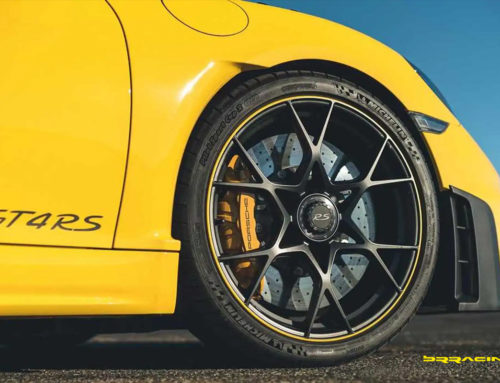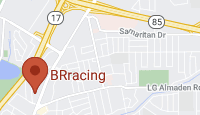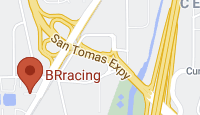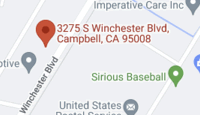I will address two common questions we get all the time about brakes – when we do service work on normal street cars.
(1) Why is it that we always recommend pads, rotors, and sensors when we do brakes?
(2) What causes the pulsing or vibration in the brake pedal with new or used brakes?
(1) One of the things that has surprised us the most in dealing with customers is the lack of trust that this industry has developed with its customers. That is just the opposite of what we have tried to create with our customers, but the background and thought is always there….are we telling the truth when we provided information to our customers? The foundation of this problem is two fold….it is very hard to make money in this business, and as a result, all shops try to maximize their sales and profit opportunities with every transaction. If you have a short sighted view, then you don’t really care about the long term relationship with the customer, so the customer be damned. Along the same lines, dealership are well known for creating a laundry list of things that “must be” done to your car, and they play on the lack of knowledge by the customer of things related to their car, and they use this tactic to play up the work list….again, to maximize the revenue and profit.
This makes the job of trying to be ethical and truthful an uphill battle…we are always fighting the perception of the industry.
An area where we often encounter this is when we do brake service work, and when we say that the brakes need to be done, we will say that it will include the brake rotors, pads, and sensors. Why? Does it really require all of them to be replaced? Most understand the pads, but the rotors? Really? And can’t the brake pad wear sensor be used again?
The answer is YES….almost always all those pieces are needed. The reason….the design of the brake rotors for European cars (at least all the ones we service……BMW, MINI, Audi, Porsche, Mercedes and Ferrari). The European cars are known for their braking capability, and one of these reasons is the combination of the pads and rotors and how they work together. The metal in a European rotor is designed to wear just like the pads. This is quickly evident when you look at the rotors on a car that needs new brakes. The rotors will have developed a significant outer lip from the wear of the rotor face. Since the pads do not cover the outer rotor area when used, the area from just inside the lip will wear down, but not the outer lip.
Then, the next question we get is, “Why can’t they be turned or surfaced?” On all brake rotors there is a minimum thickness measurement stamped onto either the outer edge of the rotor or the inner face or on the “hat”. When a European rotor has worn down, and we then resurface or “turn” the rotor face, we always get to the point where the remaining thickness of the rotor is below the minimum thickness measurement, and therefore, the rotors can not be used again. If we did both steps (turn them down, then throw them away), the customer would be paying for two charges (the turning of the rotor and the new rotor replacement). Now, its not true that the rotors always have to be replaced, but we can quickly examine the size of the lip on the rotor, and determine if it will be below the minimum thickness when turned.
On most European cars, we are seeing longer life out of the brake pad set and the rotors, with some customers getting as much as 80,000 miles from a set. But, at the same time, we have had customers have their brakes replaced early by dealers (some as low as 15k miles !), and they do a quick pad “swap”, just replacing the pads only and early, with the result that when the next pad set is replaced, the rotors are now below the safety measurement. This again reverts to other not doing the right work at the right time.
So, when you ask us about brake repairs, we will ask about the mileage on the car, and likely respond that it will require pads, rotors, and sensors.
(2) A shop performs a brake job on a vehicle (Not us). The front pads and rotors are replaced (just like we noted above). On the test drive, the vehicle had zero signs of pulsation, even after an aggressive break-in procedure (but maybe not the right “bedding” process….see our other www post about the right process to correctly “bed” new pads and rotors). Six months and 6,000 miles later, the customer is back complaining of a pulsation in the pedal. So what has happened in 6,000 miles? Did the customer tow a boat? Drive in the Sierras? Participate is a high-speed police chase? Even if the customer answered yes to one of these events, chances are it did not cause the pulsation they are now experiencing.
When the wheels are removed, there are no visual indications the vehicles has a pulsation problem. The pads are worn evenly. The rotors look fine, with very little visible wear, corrosion or excessive heat or “hot” spots. So what’s next? The technician/shop could machine the rotors on a bench lathe and put them back on the vehicle. On the test drive, the pulsation will be gone, for at least another 6,000 miles.
The next time the customer is back with the same pulsation problem, the shop could go all out and install new pads and rotors. They could even search the repair information for TSBs (technical service bulletins) related to pulsation. Surely they could not be alone in having this problem with this car! When the vehicle is given back to the customer, chances are there will not be any pulsation, at least for the next 6,000 miles.
Chances are the conscientious shop in the example lost a lot of money on this brake job along with the customer’s trust. But, it did not have to happen like this. This is often the difference in a correct and complete brake job, versus the quick and cheaper route. Be wary of the quick brake job.
Measuring runout and DTV would have taken 20-25 minutes during the initial brake job. Also, they could have sold the customer the services or parts to correct the real problem.
What Really Happened?
Let’s say the vehicle had .003 of lateral runout when measured at the outside face of the rotor. If this vehicle is riding on 205/55R16 tires, in one mile, the high-spot with .003 of runout goes past the caliper approximately 836 times. Over 6,000 miles, that spot on the rotor will go past the pads more than 5 million times! Every time this spot passes the pads, a little bit of the rotor’s material is removed (remember above and how the rotors also wear). Over 5 million revolutions, enough material is removed to create a thickness variation that can be felt by the driver.
The Rotor is Not Warped
In the scenario, I never used the word warped. The words warped and warping should never be applied to brake systems, but that is the word most widely used.
Warping is defined in the dictionary as:
Warp: to turn or twist out of or as if out of shape; especially to twist or bend out of a plane.
In the scenario, there is no twisting or bending. There is only wear and changes in the dimensions of the rotor. Heat was not a force distorting the rotor by softening the metal. The heat used to cast the rotor is three to five times greater than the heat produced in the most aggressive braking down a mountain road. Most engineers will tell you, rotors will crack long before they are distorted by heat.
Sure, a customer can experience a pulsation or judder after higher-than-normal brake temperatures are experienced. 99% of the time it is not the fault of the rotor, but it is the pads. What has happened is the pad’s friction material has been unevenly deposited around the face of the rotor (we call this pad build up). This creates uneven braking forces as the dissimilar sections pass by the pads. This type of pulsation or judder will typical go away after a few hundred miles of use or “re-bedding” of the pads and rotors.
Parallelism
The main culprit of the chronic pulsation was variations in disc thickness or parallelism. The two friction surfaces of a rotor are designed to be parallel to one another within a certain specification. The allowable tolerance is known as parallelism. It is also known as the rotor’s disc thickness variation or DTV. In order for the pad to stay in contact with the rotor, the piston must extend or be pushed back into the housing as force is applied. This creates the pulsation in the pedal that is most noticeable to the driver.
Every time the low spot passes by the caliper, hydraulic pressure at the caliper drops. This produces less braking force as this area passes by the pads. This can also affect braking distances.
Runout
Runout is defined as the amount of lateral (side-to-side) movement of the rotor as it rotates 360 degrees. The specification is usually provided as TIR or Total Indicated Runout. TIR is defined as the runout measured on the vehicle or installed runout. TIR includes all factors that can influence the amount of runout. Runout can be in the hub’s flange, the rotor or it can be caused by improper lug torque.
You could also call TIR the stacked runout of the hub/rotor/wheel assembly. All of the above factors add up to give the rotor’s TIR. This brings up an important point. The average allowable TIR specification for late-model vehicles is between 001 and .003. This is the maximum allowed! Some manufacturers have specified .000 of runout.
Runout will NOT cause pedal pulsation on vehicles with floating or sliding calipers and the caliper housing is free to move and the runout is not excessive.
Under these conditions, the caliper will follow the runout. The caliper housing will move in and out in relation to the runout. This movement will not cause the caliper piston to move. This is a key point to understand. No piston movement results in no fluid movement in the hydraulic system. If there is no fluid movement, the brake pedal won’t move or pulsate. So, a key point to understand is runout generally does NOT cause pulsation. Runout causes thickness variation that leads to pulsation problems.
Solutions
The first solution to solve pulsation problems is to prevent them from happening in the first place. This is another reason that we replace pads and rotors with each brake job.
Second, pay special attention to the mounting flange on the brake caliper mount. Taking time to clean the mounting flange on the hub can remove corrosion and debris that can cause runout. Also, pay attention to lug nut torque when the wheels are applied, and also that the wheel hub surface is flat, clean, and without rust or corrosion.
Third, take time to service the caliper, slides and hardware. If a caliper cannot float or retract the piston, it can result in increased wear that could lead to DTV and pulsation. New abutment clips are being used on some new vehicles that help to push the pads back from the rotor to reduce drag and allow for less wear on the pads and rotors. Failing to renew these components as part of a brake job could reduce the life of the brake job and increase comebacks (this is why on Porsches the brake hardware kit is also needed each time).
Pulsation comebacks cost technicians and shops parts and lost labor and customer dissatisfaction. Not doing a complete brake service…in an effort to keep the cost down, or to churn thru more customers more quickly, only results in a poor service visit and an unhappy customer.
At BRR, we do a complete brake solution and service every time, and we also understand the complete theory of braking so that we understand what contributes or causes braking problems. We strive for complete customer satisfaction….and the testing that we do with brake pads and rotors also contributes to a proper brake solution and service.
BRracing….your trusted service center.





Simply want to say your article is as astounding. The clarity in your put up is
simply cool and that i could suppose you are knowledgeable on this subject.
Well together with your permission allow me to clutch your
feed to keep up to date with impending post. Thanks
one million and please keep up the enjoyable work.